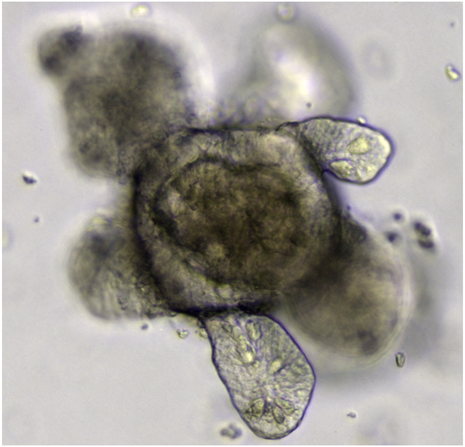Growing organs in a dish: the future of medicine?
Organoids present a novel, sustainable way to carry out medical research

Medical therapies have been developed for years using various techniques in the lab, including cell culture. But there have always been limitations as to how translatable the results are – how much like the real thing are these cells behaving, when they are being grown in such an artificial environment? Researchers often need to test in animals to validate their results in a representative environment. But there are still differences between animals and humans. Recent emergence of organoid technology has provided an alternative to this. Organoids are groups of cells, grown from stem cells, that have acquired the correct identity and spatial organisation to resemble that of an organ. This technology has grown so fast in the last couple of decades it has taken the biological and medical research field by storm.
Organoids are not easy to grow. They all require different cocktails of nutrients, growth factors and hormones, and some require scaffolds to grow on, whereas others can self-assemble without much assistance. Despite these challenges, researchers have discovered how to grow a number of different organoids. These include liver, lung, heart, retina, and even brain organoids.
Recently scientists developed an organoid that models human cardiac injury. By growing heart cells and then injuring them, they discovered that young human heart cells are capable of regenerating after injury. Using this knowledge, we can now begin to investigate how to make the adult human heart regenerate after heart attack.
Liver organoids are proving extremely useful in drug testing. The liver plays a huge part in drug metabolism – how the body processes drugs and breaks them down appropriately to prevent toxicity. This process can now be tested more accurately in liver organoids before drugs go to trial in humans.
The recent epidemic of Zika virus has created a huge need to understand how the virus prevents the proper development of the brain in infants from infected mothers. Using brain organoids researchers can infect them with Zika virus and look at how the virus affects brain cells. Following this they can investigate potential ways to intervene in this process, to allow normal brain development.
These organoids have clearly unlocked huge potential for better understanding the normal development and functioning of organs, but also how they go wrong in disease. But as with everything in medicine, nothing is perfect. The main caveat is that these organoids lack vasculature; a way to perfuse blood through the structure. This means that when the organoids get too big or complex, the cells are not getting appropriate nutrient and oxygen exchange as they would in the body leading to changes in cell behaviour. This is the biggest challenge that researchers working with organoids must overcome.
“Organoids are groups of cells, grown from stem cells, that have acquired the correct identity and spatial organisation to resemble that of an organ.”
It’s useful to isolate individual organs to study how they work, but organs in the body don’t always work alone, some signal to each other to carry out their correct function. Researchers are also investigating these interactions and one lab has recently grown an entire female reproductive system on a chip. This consists of the different organoids, such as those representing ovaries, interconnected by tubes, acting like a blood system transporting hormones and nutrients from one organ to another. Using this they are able to simulate the entire 28-day cycle. Researchers and doctors are now better able to understand how different organs interact with each other, and how this process is altered in disease.
The speed at which this technology is being developed is incredible, and exciting. They provide an opportunity to move away from the use of animals in research and to more accurately test medical applications, but they come with their own ethical considerations too. For instance, to what extent should we regulate the growth of these organoids? They are grown from human cells and represent human tissue after all. We should think carefully about how this technology is developing and put regulations in place as appropriate
 News / Police to stop searching for stolen Fitzwilliam jade17 April 2024
News / Police to stop searching for stolen Fitzwilliam jade17 April 2024 Interviews / ‘It fills you with a sense of awe’: the year abroad experience17 April 2024
Interviews / ‘It fills you with a sense of awe’: the year abroad experience17 April 2024 News / Night Climbers call for Cambridge to cut ties with Israel in new stunt15 April 2024
News / Night Climbers call for Cambridge to cut ties with Israel in new stunt15 April 2024 Sport / Kabaddi: the ancient sport which has finally arrived in Cambridge17 April 2024
Sport / Kabaddi: the ancient sport which has finally arrived in Cambridge17 April 2024 Features / Cambridge’s first Foundation Year students: where are they now?7 April 2024
Features / Cambridge’s first Foundation Year students: where are they now?7 April 2024





